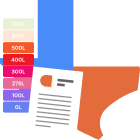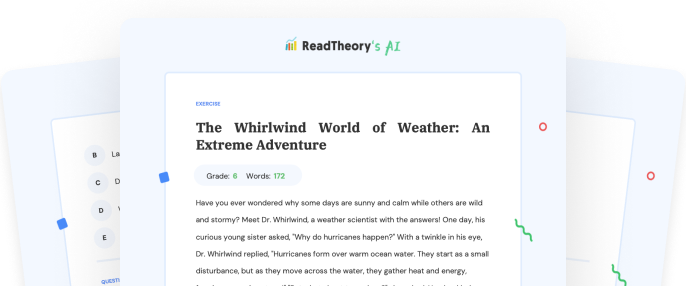Transform Your Teaching
with AI-Powered Worksheets
With ReadTheory’s Instant Worksheet Builder, you can create engaging, grade-appropriate worksheets tailored to your students in minutes. Spark curiosity, save time, and empower critical thinking with AI-powered tools designed for teachers like you.


The Invisible Chain: Understanding Cell Phone Addiction
Did you know that the average person checks their cell phone 80 times a day? That's a lot, right? Cell phones have become an essential part of our lives, but sometimes, we might use them too much without even realizing it. This is what we call 'Cell Phone Addiction.' Like a hot chocolate on a cold day, your phone may provide comfort. You play games, chat with friends, or scroll social media platforms. But when it becomes a habit that you can't break, it turns into an addiction. This can affect your grades, your sleep, and even your friendships. But don't worry! Here are some simple ways to take control back. Set a screen time limit for yourself, indulge in outdoor activities, or pick up a new hobby. Remember, a phone is a tool, not a master. Understanding this is the first step in breaking the invisible chain of cell phone addiction.
Question 1
What does the term 'Cell Phone Addiction' mean?
Constant use of cell phone
Checking cell phone once a day
Using cell phone for business
Using cell phone for school
Not using cell phone at all
Question 2
How can cell phone addiction affect you?
It can improve your grades
It can make you popular
It can improve your sleep
It can affect your grades and sleep, and friendships
It can make you smarter
Question 3
What is the first step in breaking cell phone addiction?
Throwing away your cell phone
Deleting all apps
Turning off your phone
Understanding that a phone is a tool, not a master
Not talking to your friends
Question 4
What is one of the ways to take control back from cell phone addiction?
Watching more TV
Playing more video games
Setting a screen time limit
Using phone while studying
Chatting more with friends
Question 5
What comfort does a cell phone provide like a hot chocolate on a cold day?
You can use it to make hot chocolate
It heats up in your hand
You can play games, chat with friends, or scroll social media platforms
It can be used as a blanket
It can keep you from going outside
 or share via
or share via

Assign the ReadTheory pretest to determine students' reading levels.

Why Teachers Love
Instant Worksheet Builder?

Tailored Content for Every Student
Craft worksheets with passages and multiple-choice questions customized to your chosen topic and grade level, ensuring relevance and engagement.

Save Hours
of Prep Time
Our AI, Lexi, generates complete worksheets—passages, questions, and answers—in minutes, freeing you to focus on teaching, not planning.

Standards-Aligned Learning
Every worksheet is designed to boost reading comprehension and critical thinking, aligning seamlessly with State Standards to help your students shine.
Personalized teaching
for personalized learning
Browse worksheets created and refined by educators using Lexi—your source for inspiration and ready-to-use resources.


ReadTheory is free for Teachers to use.
Join thousands of educators using ReadTheory for free. Sign up today and start creating in just minutes!





